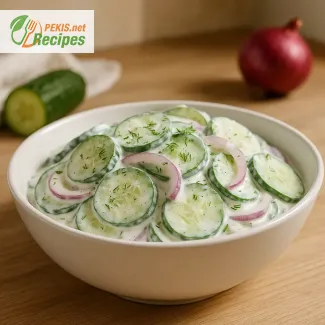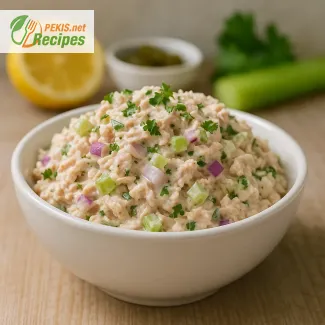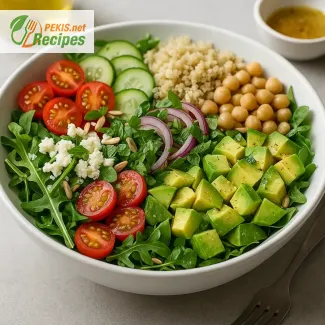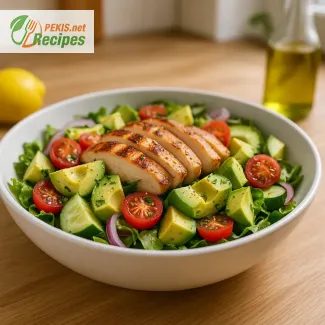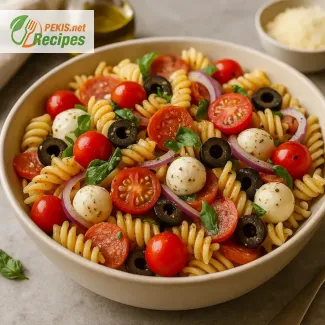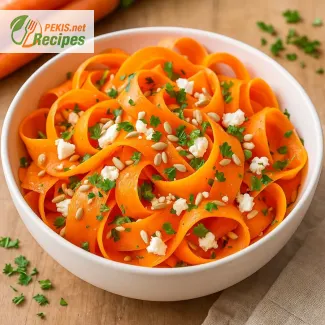
The Art of Making Perfect Homemade Sauerkraut
A Timeless Fermented Delight
For centuries, sauerkraut has been a beloved staple in many cuisines around the world. This fermented cabbage dish, known for its distinctive tangy flavor and crunchy texture, is not only delicious but also deeply rooted in culinary traditions. Whether served as a flavorful side dish, a topping for sausages, or an ingredient in hearty stews, sauerkraut offers an unmatched depth of flavor that enhances any meal.
Crafting homemade sauerkraut is an art that transforms simple cabbage into a complex, probiotic-rich delicacy. Unlike store-bought versions, which often contain preservatives and excessive vinegar, making sauerkraut at home allows you to control the fermentation process, ensuring the perfect balance of flavor, texture, and natural goodness.
The Secret Behind the Perfect Fermentation
At its core, sauerkraut is a simple blend of cabbage and salt, but the true magic happens during the fermentation process. When finely shredded cabbage is massaged with salt, it releases its natural juices, creating a brine that fosters the growth of beneficial bacteria. These microbes work over time, slowly breaking down the sugars in the cabbage and converting them into lactic acid—the key to sauerkraut’s signature tang.
The fermentation time can vary depending on your preference. A shorter fermentation of around one to two weeks results in a milder, crisper sauerkraut, while a longer process—four to six weeks or more—develops a deeper, more complex flavor. Temperature also plays a crucial role; a cool, stable environment between 18-22°C (65-72°F) is ideal for proper fermentation.
Why Make Your Own Sauerkraut?
There are many reasons why homemade sauerkraut is superior to store-bought alternatives:
1. Unparalleled Flavor & Texture
Unlike mass-produced sauerkraut, which is often pasteurized and lacks depth, homemade versions are full of natural complexity. The crunchy texture and vibrant taste can be customized to your liking—more tangy, softer, crunchier, or even infused with additional flavors like caraway seeds, juniper berries, or garlic.
2. Full Control Over Ingredients
When making sauerkraut at home, you ensure that no unnecessary additives or preservatives are included. Many store-bought brands add vinegar to mimic fermentation, but the true lactic acid fermentation process produces a more authentic and balanced taste.
3. Cost-Effective & Sustainable
A single head of cabbage can yield jars of sauerkraut at a fraction of the cost of pre-packaged versions. Additionally, making sauerkraut at home helps reduce food waste, as you can repurpose surplus cabbage and other vegetables in your kitchen.
Choosing the Best Cabbage for Fermentation
The foundation of great sauerkraut starts with high-quality cabbage. Opt for firm, fresh, and dense heads—green cabbage is the most traditional choice, but varieties such as red cabbage or Savoy cabbage can also be used for unique flavor profiles and stunning visual appeal.
When selecting cabbage, look for:
- Tightly packed leaves for a dense, crisp texture
- No visible bruises or wilting, as freshness is key to a successful fermentation
- Organic varieties, when possible, to avoid unwanted chemicals that may interfere with fermentation
Mastering the Fermentation Process
Fermenting sauerkraut at home is a straightforward process that requires only a few key steps, but paying attention to detail is crucial for success. The right balance of salt-to-cabbage ratio, proper packing, and patience will ensure your sauerkraut turns out perfect every time.
Essential Fermentation Tips:
- Use the correct amount of salt – The ideal ratio is 2% salt to cabbage weight. This ensures the proper environment for fermentation without being too salty.
- Massage thoroughly – Kneading the cabbage with salt draws out the natural juices, which form the fermentation brine.
- Pack tightly – Once in the jar, pressing the cabbage down removes air pockets and ensures the brine fully submerges the cabbage.
- Weigh it down – A fermentation weight or small plate helps keep the cabbage submerged to prevent spoilage.
- Ferment at a stable temperature – Keep the sauerkraut in a cool, dark place to allow proper bacterial growth.
- Taste regularly – After the first week, start tasting the sauerkraut to determine when it has reached your preferred level of tanginess.
Creative Ways to Enjoy Sauerkraut
Once fermented to perfection, sauerkraut can be enjoyed in numerous ways. While its most traditional use is as a classic accompaniment to sausages and meats, it also shines in:
- Sandwiches & Burgers – Adds a tangy crunch to Reuben sandwiches or gourmet burgers.
- Salads – Enhances fresh salads with a punch of acidity and probiotic goodness.
- Hearty Stews & Soups – Perfect in dishes like Polish bigos or German sauerkraut soup.
- Pierogi or Dumpling Fillings – A unique stuffing for dumplings, blending well with mushrooms or potatoes.
- Breakfast Dishes – Try it alongside eggs, avocado toast, or even as a topping for omelets.
Storing and Preserving Your Sauerkraut
Homemade sauerkraut is best stored in airtight glass jars in the refrigerator, where it continues to develop its flavor while remaining fresh for several months. The cool temperature slows down fermentation, preserving its crisp texture and tangy taste.
For those making larger batches, sauerkraut can also be stored in a cool basement or root cellar. Freezing is an option, though it may slightly alter the texture.
A Rewarding Culinary Experience
Making your own sauerkraut is an immensely rewarding experience, blending traditional craftsmanship with modern creativity. With just cabbage, salt, and patience, you can create a delicious, tangy, and crunchy delicacy that complements a variety of dishes. Whether you're a fermentation enthusiast or a beginner looking to explore new flavors, this timeless dish will become a cherished staple in your kitchen.
- Prepare the cabbage: Remove the outer leaves of the cabbage and set them aside. Cut the cabbage into quarters and remove the core. Shred the cabbage finely using a sharp knife, mandoline, or food processor.
- Salt the cabbage: Place the shredded cabbage in a large mixing bowl. Sprinkle the salt evenly over the cabbage.
- Massage the cabbage: Using clean hands, massage the salt into the cabbage for about 5-10 minutes until it starts to release its natural juices and becomes slightly translucent.
- Pack the jar: Transfer the cabbage into a clean glass jar or fermentation crock, pressing it down firmly with your hands or a tamper. The cabbage should be fully submerged in its own brine.
- Weigh it down: Place a fermentation weight or a clean glass plate on top of the cabbage to keep it submerged. Alternatively, use a whole cabbage leaf to cover the surface.
- Cover and ferment: Cover the jar loosely with a lid or a clean cloth secured with a rubber band. Store in a cool, dark place (18-22°C or 65-72°F).
- Monitor fermentation: Check daily to ensure the cabbage remains submerged. If necessary, press it down or add a little brine (1 tsp salt dissolved in 250 ml/1 cup of water).
- Taste and enjoy: Fermentation can take between 1 to 6 weeks, depending on the desired tanginess. After 1 week, taste the sauerkraut, and continue fermenting if a stronger flavor is desired.
- Store: Once fermented to your liking, transfer the sauerkraut to the refrigerator to slow the fermentation process. It will keep for several months.
Enhancing the Classic Sauerkraut Recipe
Small Changes, Big Flavor: Elevating Homemade Sauerkraut
Traditional sauerkraut is a simple yet powerful dish, deeply rooted in culinary traditions. While the classic method of fermenting cabbage with salt is timeless, there are many ways to enhance, refine, and customize this recipe to better suit individual tastes and dietary needs. By carefully selecting ingredients, adjusting fermentation time, and experimenting with flavor combinations, you can transform basic sauerkraut into a gourmet culinary experience.
Selecting the Best Ingredients for Superior Flavor
The quality of ingredients plays a crucial role in the final taste, texture, and aroma of sauerkraut. While cabbage and salt are the foundation, choosing the right type of cabbage and experimenting with additional elements can make a remarkable difference.
Choosing the Right Cabbage
Not all cabbages are the same when it comes to fermentation. The best results come from fresh, firm, and organically grown cabbage, as pesticides or wax coatings can interfere with the fermentation process.
- Green cabbage – The traditional choice, offering a balanced flavor and a satisfying crunch.
- Red cabbage – Provides a vibrant color and a slightly sweeter taste.
- Savoy cabbage – Has a more delicate texture and milder flavor, ideal for those who prefer a softer sauerkraut.
- Napa cabbage – While commonly used in kimchi, it can create a softer, more delicate sauerkraut.
The Importance of High-Quality Salt
Using non-iodized salt is essential, as iodine can inhibit fermentation. The best options include:
- Sea salt – Enhances natural flavors without additives.
- Himalayan pink salt – Rich in minerals, adding a subtle depth to the taste.
- Kosher salt – A clean and additive-free option, ensuring pure fermentation.
Adding Depth to the Flavor with Spices and Herbs
While traditional sauerkraut is delicious on its own, adding herbs, spices, and other natural ingredients can introduce complex flavor profiles.
- Caraway seeds – The most classic addition, giving sauerkraut a nutty, earthy flavor.
- Juniper berries – Provide a slightly piney, citrus-like aroma.
- Garlic – Intensifies the savory profile while adding a subtle kick.
- Bay leaves – Enhance depth and richness without overpowering the dish.
- Mustard seeds – Contribute a mild spiciness and enhance fermentation.
- Ginger – Adds warmth and a slightly sweet tang, complementing the acidity.
Experimenting with Additional Vegetables
Adding other vegetables can introduce unique textures and flavors while increasing nutritional value. Some excellent choices include:
- Carrots – Provide natural sweetness and a pleasant crunch.
- Beets – Add a deep red hue and an earthy, slightly sweet flavor.
- Radishes – Offer a peppery bite and crisp texture.
- Onions – Enhance umami depth and complement the natural tang of fermentation.
- Apples – Soften the acidity with a gentle sweetness.
Controlling the Fermentation Process for Optimal Results
Fermentation time significantly impacts the taste, texture, and probiotic content of sauerkraut. While short fermentations (1-2 weeks) result in a milder, crunchier sauerkraut, longer fermentations (4-6 weeks or more) develop a richer, tangier profile.
Key Factors That Influence Fermentation:
- Temperature Control – The ideal temperature is 18-22°C (65-72°F). Warmer temperatures speed up fermentation, while cooler ones slow it down.
- Brine Coverage – The cabbage must remain fully submerged to prevent spoilage. If needed, additional brine (1 tsp salt per 250 ml/1 cup water) can be added.
- Avoiding Contamination – Always use clean utensils and jars to prevent mold and unwanted bacteria.
Common Mistakes to Avoid
Even experienced fermenters can encounter issues when making sauerkraut. Here are some frequent mistakes and how to prevent them:
- Using too little salt – Insufficient salt can lead to spoilage and unwanted bacterial growth.
- Not pressing cabbage tightly enough – Properly packed cabbage releases brine and reduces air exposure, which helps fermentation.
- Skipping fermentation weights – If cabbage isn’t submerged, it may develop mold or an unpleasant texture.
- Over-fermenting – Leaving sauerkraut to ferment for too long without refrigeration can cause it to become overly sour.
- Using tap water for brine – Chlorinated water can interfere with beneficial bacterial growth. Opt for filtered or spring water instead.
Healthier Alternatives and Variations
For those looking to make their sauerkraut even healthier or adapt it to specific dietary needs, a few simple modifications can help.
Reducing Sodium
While salt is necessary for fermentation, those on a low-sodium diet can reduce the amount slightly and incorporate natural alternatives such as:
- Celery juice – Provides natural sodium while maintaining the correct environment for fermentation.
- Seaweed flakes – Enhance mineral content while adding a mild saltiness.
Increasing Probiotic Benefits
For an even higher probiotic count, sauerkraut can be fermented with additional lacto-fermentation boosters, such as:
- Whey – A natural starter culture rich in beneficial bacteria.
- Kefir grains – Introduce a wider range of probiotics into the fermentation process.
Why Homemade Sauerkraut is Better Than Store-Bought
While store-bought sauerkraut can be convenient, homemade sauerkraut is far superior in terms of flavor, texture, and health benefits.
1. No Unwanted Additives
Many commercial brands contain preservatives, vinegar, and pasteurized cabbage, which destroy beneficial probiotics. Homemade sauerkraut preserves all the natural enzymes that support gut health.
2. Customizable Flavors
When making sauerkraut at home, you have full control over spices, textures, and fermentation time, allowing for a truly personalized taste.
3. Superior Texture
Store-bought sauerkraut is often overly soft or mushy, while homemade versions retain their natural crunch and vibrancy.
Storing and Enjoying Sauerkraut
Once fermented, sauerkraut should be stored properly to maintain its quality. The best methods include:
- Refrigeration – Slows fermentation and preserves taste and texture.
- Cold storage – A basement or root cellar can maintain optimal freshness for months.
- Freezing – Can be used for long-term storage, though it slightly softens texture.
Elevating Sauerkraut from Side Dish to Star Ingredient
Beyond its traditional uses, sauerkraut can be creatively incorporated into many dishes. Consider:
- Topping for grain bowls – Adds tangy contrast to quinoa or brown rice dishes.
- Sauerkraut pesto – Blended with garlic, olive oil, and nuts for a probiotic-rich sauce.
- Savory pancakes – Mixed into batter for a unique twist on latkes or fritters.
- Sauerkraut stir-fry – Tossed with tofu and vegetables for a fusion dish.
With a few small adjustments, the classic sauerkraut recipe can be transformed into something truly exceptional, flavorful, and nutritious. Whether through ingredient experimentation, fermentation control, or creative serving ideas, homemade sauerkraut continues to be one of the most versatile and rewarding fermented foods.
- This recipe is naturally gluten-free and allergen-free.
- Ensure the use of uncontaminated sea salt to avoid potential traces of gluten.
Substitution Tips for Allergens and Gluten:
- If avoiding sodium, reduce the salt content and use a salt substitute, though fermentation may be less effective.
- To enhance flavor without using juniper berries (potential allergen), try bay leaves or mustard seeds instead.
- Vitamin C: 15 mg (boosts immunity, supports skin health)
- Vitamin K: 13 mcg (important for blood clotting and bone health)
- Folate: 24 mcg (supports cell function and tissue growth)
- Calcium: 36 mg (supports bone strength)
- Potassium: 170 mg (aids in muscle function and hydration balance)
- Magnesium: 13 mg (supports nerve function and muscle relaxation)
- Lactic Acid: Enhances gut health and digestion
- Glucosinolates: Natural compounds found in cabbage that may help reduce inflammation
- Polyphenols: Found in fermented cabbage, contributing to reduced oxidative stress
- Beta-Carotene: Supports eye health and immune function
